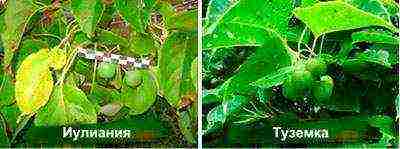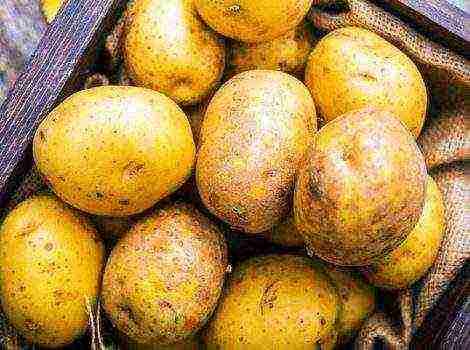Content [show]
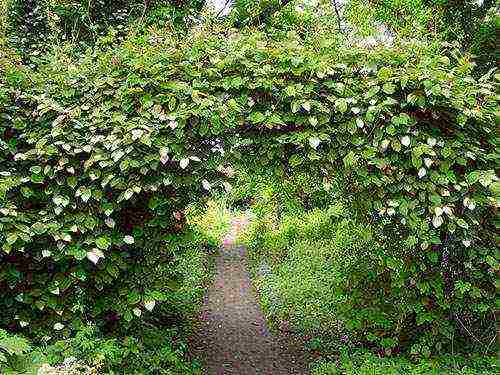
Actinidia is a popular plant of the subtropical zone, belongs to the genus of shrub vines. Actinidia kolomikta and its varieties for the Moscow region, photos of which are presented in the article, are known for delicious fruits. Many varieties are suitable even for the harsh Russian climate, and their characteristics will be described a little below.
Characteristic features of actinidia kolomikta
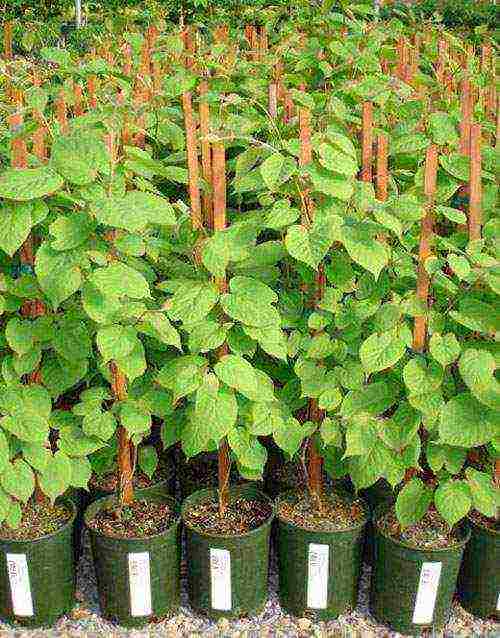 Thanks to the efforts of breeders, such an outlandish plant as actinidia kolomikta is successfully grown and bears fruit even in the regions of the Russian Federation. This species is frost-hardy, tolerant of the harsh conditions of our climatic zone and is quite unpretentious to care for.
Thanks to the efforts of breeders, such an outlandish plant as actinidia kolomikta is successfully grown and bears fruit even in the regions of the Russian Federation. This species is frost-hardy, tolerant of the harsh conditions of our climatic zone and is quite unpretentious to care for.
Outwardly, actinidia kolomikta resembles a liana with weaving branches and large heart-shaped leaves. The color scheme of the foliage is inconsistent and changes depending on the season. The flowering of actinidia begins in mid-May and can last for several weeks; the flowers are irregular in shape and have a pleasant fragrant aroma. The plant bears fruit since August, but often this phase is delayed until October.
The fruits of actinidia contain a whole range of vitamins and nutrients:
- vitamins C, P, group B;
- citric, malic, oxalic acids;
- glucose;
- polyphenols;
- biologically active substances.
Actinidia kolomikta holds the record for vitamin C content, leaving far behind lemon and black currant.
As preparations for the winter, many housewives grind fruits with sugar or dry them. However, when consumed, one should take into account the fact that the berries have a strong laxative effect, and dose their use.
Actinidia kolomikta belongs to dioecious plants, there are male and female types. When planting in a garden, it is necessary to place male and female plants side by side so that the crop yield is full. Propagated by cuttings, which are best planted in the ground in spring.
The best varieties of actinidia kolomikta for the Moscow region
The climatic conditions of the Moscow region are rather harsh. There are frosts in the spring-winter period and dry summer days. The optimal area for the cultivation of actinidia kolomikta is the southern regions, but with the help of the efforts of breeders, some varieties of tropical plants are suitable for growing in the Moscow region, the presented photos of each of them will help gardeners to determine belonging to a particular variety.
The most recommended varieties of actinidia kolomikta for growing in the Moscow region:
- Doctor Shimanovsky;
- Adam;
- September;
- Vitacola;
- Gourmet.
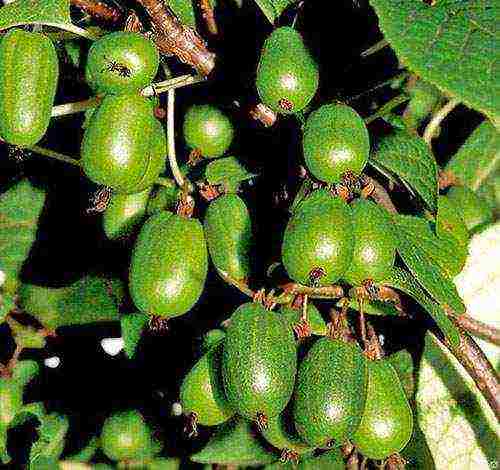 Actinidia kolomikta Dr. Shimanovsky is a type of plant with small oval-shaped berries that ripen in August. It is advisable to plant this variety in a sunny place, but not under direct scorching rays, the presence of a light shade is required. The berries have a pronounced apple and pineapple aroma.
Actinidia kolomikta Dr. Shimanovsky is a type of plant with small oval-shaped berries that ripen in August. It is advisable to plant this variety in a sunny place, but not under direct scorching rays, the presence of a light shade is required. The berries have a pronounced apple and pineapple aroma.
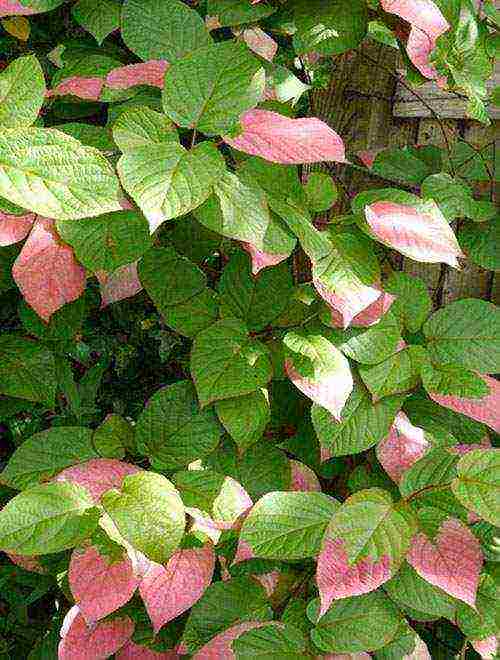 Actinidia kolomikta Adam is an ornamental variety with unusually colored foliage that blooms in green, turns white by the end of spring, and acquires a pink color by autumn, the color saturation is constantly increasing. This variety loves sunny, low wind places, is perfect for decoration purposes when creating hedges, gazebos, arches, landscaping balconies and loggias. Adam is a male type of actinidia colomicta. During flowering, it is covered with small white inflorescences, exuding a pleasant aroma, similar to the scent of lemon.The variety grows very quickly, reaching a height of four meters.
Actinidia kolomikta Adam is an ornamental variety with unusually colored foliage that blooms in green, turns white by the end of spring, and acquires a pink color by autumn, the color saturation is constantly increasing. This variety loves sunny, low wind places, is perfect for decoration purposes when creating hedges, gazebos, arches, landscaping balconies and loggias. Adam is a male type of actinidia colomicta. During flowering, it is covered with small white inflorescences, exuding a pleasant aroma, similar to the scent of lemon.The variety grows very quickly, reaching a height of four meters.
 Actinidia Kolomikta September is a frost-resistant species that can withstand temperatures down to 40 C. It is characterized by high productivity, greenish-yellow fruits have a pleasant taste. For pollination, it is recommended to plant near actinidia of the Adam variety. The plant spreads along the ground or twines around trees, installed supports.
Actinidia Kolomikta September is a frost-resistant species that can withstand temperatures down to 40 C. It is characterized by high productivity, greenish-yellow fruits have a pleasant taste. For pollination, it is recommended to plant near actinidia of the Adam variety. The plant spreads along the ground or twines around trees, installed supports.
 Actinidia kolomikta Vitacola - the variety has large oblong fruits, collected in bunches of two or three berries. Vitacola begins to ripen in stages by mid-August. Leaves have an inherent decorative color in white-green or pink tones. The plant begins to bear fruit in the third year after planting in open ground, belongs to the female type, grows to a height of three to four meters.
Actinidia kolomikta Vitacola - the variety has large oblong fruits, collected in bunches of two or three berries. Vitacola begins to ripen in stages by mid-August. Leaves have an inherent decorative color in white-green or pink tones. The plant begins to bear fruit in the third year after planting in open ground, belongs to the female type, grows to a height of three to four meters.
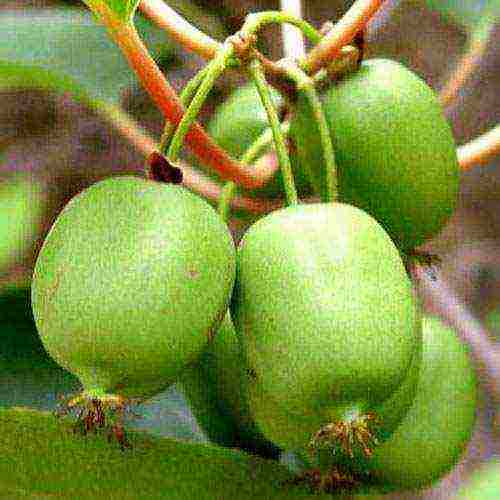 Actinidia kolomikta Lakomka is distinguished by the large size of the berries. Cylindrical fruits of bright green color with white stripes, with a rich pineapple aroma. Ripening time is in August-September.
Actinidia kolomikta Lakomka is distinguished by the large size of the berries. Cylindrical fruits of bright green color with white stripes, with a rich pineapple aroma. Ripening time is in August-September.
Features of care for actinidia kolomikta
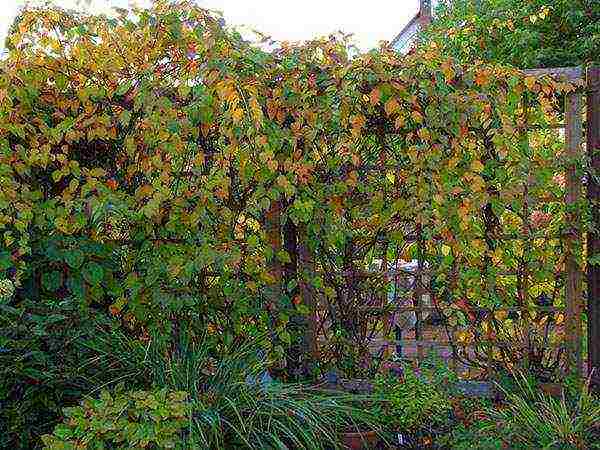 A distinctive feature of the actinidia kolomikt is its frost resistance, but to ensure safe wintering, it is necessary to additionally cover the plant in late autumn. Given the culture's love of branching, it should be provided with additional supports.
A distinctive feature of the actinidia kolomikt is its frost resistance, but to ensure safe wintering, it is necessary to additionally cover the plant in late autumn. Given the culture's love of branching, it should be provided with additional supports.
It is preferable to choose soil with an admixture of clay or sand so that it is loose and quickly moistened. It is recommended to plant actinidia in early May; keep a distance of at least two meters between the plants. The upper layers of the soil should be enriched with humus or rotted organic fertilizers. For good fertility, the crop should be regularly fed with nitrogen-containing compounds.
It is necessary to organize watering of actinidia kolomikt by airborne droplets in the evening, on hot days it is imperative to additionally moisten the soil around the plant. Loosening is carried out often, followed by mulching of the near-stem area.
Actinidia rhizomes are well developed and located shallow underground. This fact should be taken into account when loosening the soil, so as not to damage the roots.
Considering all the above recommendations, each gardener can grow actinidia kolomikta on his site by choosing one of the recommended varieties for the Moscow region from the photo.
Interesting about actinidia kolomikta - video
|
Trees and shrubs Actinidia. Unique and new varieties of Russian selection Actinidia
In the 2000s, the pioneers in the market for actinidia seedlings in our country were varieties of Polish selection, for example, such as Adam, Doctor Szymanowski and others. For some time, these varieties of imported selection were the only ones in our region, and therefore good. We acquired these varieties, unaware of the enormous and successful work of our scientists. However, domestic breeders have worked for decades and continue to work to improve the varieties of this berry crop, making them more suitable for our cold regions. Judge for yourself: the varieties of imported breeding are not hardy enough for the northern regions of Russia, but the new varieties of actinidia, bred by our breeders, feel good even during severe frosts. It should be noted that the activities of domestic scientists also affected the quality of the fruits themselves: the berries turned out to be large and sugary (this is appreciated by all gardeners). What taste they have acquired! Now in the gardens grow actinidia with apple, strawberry, pineapple flavor, balsamic, banana, fig, grape, date; there are even those berries that have a candy, actinidium (unlike anything and very pleasant) and peppery flavor.One of the most outstanding breeders, thanks to whom such a variety became possible, is Ella Ioganovna Kolbasina.
According to frost resistance, actinidia species can be arranged in the following order: • actinidia kolomikta (up to -45 -50 C); • actinidia arguta, a. hybrid, as well. giraldi (up to -28 -40 C); • actinidia polygamy (up to -28 -35 C); • actinidia purpurea (up to - 25 C); • Chinese actinidia (kiwi) (up to -8 -15C). It is worth emphasizing that for the Moscow region, and indeed for central Russia in general, type a is not at all suitable. Chinese (kiwi), but a. kolomikta will be able to adapt to a much more severe climate than the middle zone. All actinidia suffer from late spring and early autumn frosts on a par with northern grape varieties. However, the trend that has emerged in recent decades towards a reduction in the period of frosts and their intensity (due to global climatic changes) has sharply increased the prospects of actinidia for the middle zone. Actinidia has become almost invulnerable and confidently strides north! The taste of this berry culture is worthy of special attention. Many novelties of actinidia breeding are similar in taste to kiwi, or, to be more precise, to the fruits of a. sweet (kiwi is the commercial name). This hybrid has been created by breeders from New Zealand for 80 years, trying to improve the wild growing. Chinese. Well done, they did it successfully, but, unfortunately, their plant is not suitable for our cold regions. However, again returning to our domestic breeders, new varieties of actinidia have appeared. And they surpassed kiwi in many ways, especially in flavor and aroma. Firstly, unlike kiwi, the skin is very thin, not pubescent and tender. The fruit has a balanced, harmonious taste and can be sweet, sweet and sour and even peppery. Also, breeders "decorated" some types of actinidia: the skin and pulp can be not only green, but also olive, purple and orange. The great taste of these fruits is based on their invariably high sugar content.In the best modern varieties offered to you, the sugar content of the fruit pulp does not fall below 10%, sometimes reaching 17% - this is comparable to melon and grapes, and overlaps most of the traditional fruit-berry crops for the middle strip. Further in this article, many varieties of actinidia of domestic selection are listed by type. All of these plants can be purchased at online store Zilli-on. Actinidia Kolomikta
This type of actinidia is quite famous and popular. The most frost-resistant species. It is often called small raisins, raisins and arctic beauty. This species got its name "kolomikta" because of the variegated color of the leaves (in translation it means "burning, blinding"). A. kolomikta is recognized by scientists as the most cold-resistant species (recall that she is not afraid of 50-degree frosts). That is why she is sometimes called the Arctic beauty. Differs in early maturity: two-year-olds give the first harvest the next year after planting in the spring. Lives for over 50 years. Fruits fall off (except for the Moma variety). Liana can grow up to seven meters in height. Most of the plants are self-fertile. In this regard, several male varieties should be planted next to the female varieties (usually two or three pollinators are enough for eight female plants, it is better that the pollinator varieties are different - the harvest will be more abundant and tastier). This species has one distinctive feature that makes it interesting not only as a berry crop, but also as an ornamental plant. We are talking about the variegated leaves of the plant. By the beginning of summer, their color changes: they become white-pink-green. It is male plants that change color to a greater extent. This is worth considering if you decide to buy actinidia seedlings. Berries have a different aroma: most often it depends on the type of plant. Considering the varieties of this species listed below, you can see that there is a pineapple, strawberry, date, fig aroma (it can be from several combinations at the same time). Kolomikta is a record holder among all known berries in terms of ascorbic content, second only to some species of rose hips. In 2 berries - as a rule, the daily requirement of an adult. Varieties of actinidia kolomikta:
Actinidia Arguta
Some of the most popular varieties of this species are listed below. Varieties of actinidia arguta:
Actinidia polygamy
Polygamy, like kolomikta, is distinguished by its early maturity: two-year-olds give the first harvest the next year - a year after planting in the spring. Lives for over 50 years. Varieties of actinidia polygam:
Actinidia hybrid
Varieties of hybrid actinidia:
Actinidia Giraldi
Varieties of actinidia giraldi:
Conclusion Having considered the description of the species of actinidia and its varieties, we can conclude that actinidia of domestic selection is superior to imported ones in all points. The most important thing is a high degree of winter hardiness. In addition, the novelties of the actinidia selection have large fruits, as well as a wide range of aromas and tastes, maximum sugar content and vitamin content. At the moment, we are practically exclusive suppliers of seedlings of these unparalleled varieties. All new varieties of actinidia have been successfully introduced to the territory of the Moscow region by agronomists for a long time online store Zilli-on. Turning to them for help, you will receive high quality actinidia seedlings that will decorate your garden!
**** Published as an advertisement Text: Gidaspov Nail Namikovich, scientist agronomist 09.2013 To the list Discuss the article |
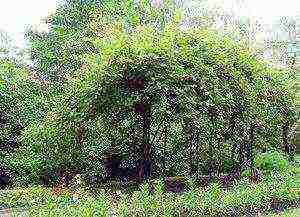 Actinidia can be described as a liana-like plant with a powerful tree-like stem that is covered with large leaves. There was a time when this plant was widely used for decorative purposes.
Actinidia can be described as a liana-like plant with a powerful tree-like stem that is covered with large leaves. There was a time when this plant was widely used for decorative purposes.
However, later, on some varieties, it was possible to find fruits with a pleasant taste. As a result, wild-growing actinidia began to be used as a base for breeding fruit-bearing varieties. One of them has become especially popular and widely known even in our country. This is the well-known kiwi.
It can be grown only in a subtropical climate. Actinidia Kolomikta, which has many properties similar to kiwi, appears to be of a slightly different plan. Today, this variety can be grown even in the Russian climate, and the berries are just as tasty and high-quality as that of the popular fruit.
Description and features of actinidia
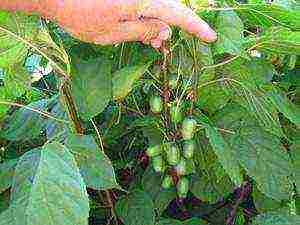 The efforts of the breeders were not in vain - many new varieties of actinidia have appeared, which can be cultivated in such harsh regions as Siberia, the Urals, the Moscow region, etc.
The efforts of the breeders were not in vain - many new varieties of actinidia have appeared, which can be cultivated in such harsh regions as Siberia, the Urals, the Moscow region, etc.
If the gardener is going to grow actinidia in the conditions of the Moscow region or other harsh regions, then it is recommended to use the Kolomikta variety.
This type of actinidia is not only undemanding to growing conditions, but also has a high frost resistance... Therefore, it will be quite easy to care for him.
- During the growing season, the plant acquires the features of a liana, which forms powerful weaving branches, decorated with silky large heart-shaped leaves. Their length usually does not exceed 15 cm.
- As for the color, it is not constant, so the foliage of actinidia looks new at every season. The decorative nature of actinidia is most clearly manifested in autumn: it is at this time that the leaves and fruits create the most spectacular color contrast.
- The flowering phase of actinidia lasts a long time. The first flowers open at the end of May, remaining in this state for 3 weeks.The beauty of actinidia is provided not so much by the original color as by the unusual shape of the flowers.
- During the flowering period, the plant emits a fragrant aroma reminiscent of lily of the valley, jasmine and lilac. During the fruiting period, plants enter at different intervals, however, this usually falls on the period from August to October.
Actinidia varieties
The most famous in our country are the following varieties:
-
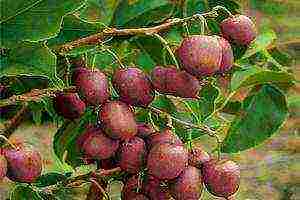 Pineapple Michurina.
Pineapple Michurina. - Large-fruited.
- Clara Zetkin.
- Apricot.
- Gummy Sweets.
- Onion.
Among the existing varieties of actinidia, species of particular interest to gardeners are Arguta, Kolomikta, Polygama... Therefore, they often have similar names.
These actinidia varieties not only look beautiful, but are also very productive, bringing in many berries each season, which have good flavoring properties and are rich in vitamin C.
Types of actinidia and varieties for the Moscow region
Actinidia Kolomikta... Among all the varieties, this one is the most suitable for growing in the conditions of the Moscow region and the northern regions. He is not afraid of frosts down to -10 degrees.
It is very simple to care for this plant, so even a non-specialist can cope with this task. In autumn, small fruits ripen, reaching a length of 2.5 cm.
Fruit weight is no more than 5 g. They have a sweet and sour taste. One bush can bear up to 5 kg of fruit annually. Ripening of berries occurs in portions, with a delay in picking, they shatter.
Actinidia Arguta... Although this variety is usually referred to the group of cold-resistant crops, however, it can tolerate frosts of at least -40 degrees.
At the same time, against the background of Kolomikta, this variety stands out for its larger fruits, whose weight is 10 g. One actinidia plant can bring up to 10 kg of berries per season. The fruits that have reached the state of technical maturity remain on the branches until frost.
Actinidia Polygamy... This variety is even less cold-resistant, since it can tolerate temperatures not lower than -35 degrees. Most often grown varieties such as Apricot, Perchik, Start, Krasavitsa.
One of the features is that the berries do not crumble after ripening. Possesses excellent taste properties, at the time of ripening it changes its usual green color to orange.
Choosing a place for growing actinidia
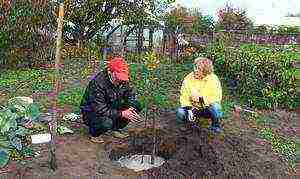 Having decided to grow actinidia on his site, the gardener first of all should decide on a place for planting. It is advisable to provide a support for the plant, which can be used as an arch, fence or gazebo.
Having decided to grow actinidia on his site, the gardener first of all should decide on a place for planting. It is advisable to provide a support for the plant, which can be used as an arch, fence or gazebo.
In the process of growth, actinidia forms a powerful root system, which can negatively affect neighboring plantings. Because of this, actinidia is recommended place as far away as possible from fruit trees and shrubs.
It should be grown no closer than three meters in relation to neighboring plantings. As a measure of protection, you can use slate or tin, which is dug into the ground around the perimeter of the placement of plants.
It is advisable to plant actinidia in the spring. In the middle zone of our country, a favorable moment for this appears already in April. The vine grows best on the lungs, fertilizer-rich soils.
However, do not count on abundant flowering and fruiting when planting on clay and damp soils. Stagnation of moisture negatively affects the development of the plant, which leads to the soaking and death of the rhizome.
In such areas, it is mandatory have to arrange drainage... It is desirable that the pits be prepared in the fall. Plants should be placed no closer than 1.5 m from each other. For 5-7 female plants, there must be at least one male.
Actinidia: planting and care
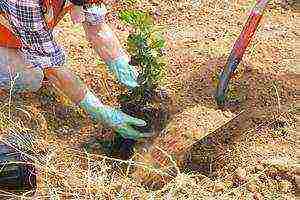 Before planting, it is necessary to prepare a hole, the diameter and depth of which must be at least 60 cm. First, the bottom must be filled with drainage, for which gravel, expanded clay, crushed stone or river sand are used.
Before planting, it is necessary to prepare a hole, the diameter and depth of which must be at least 60 cm. First, the bottom must be filled with drainage, for which gravel, expanded clay, crushed stone or river sand are used.
They are laid in a layer of 15 cm.After that, in the pit spread the potting mix, preparing it from half a bucket of humus, sod land, a small amount of ash.
The agrotechnology of growing actinidia is in many ways reminiscent of grapes. The plant responds well to frequent watering, however, moisture should not stagnate.
An excellent effect is provided by spraying the leaves, which must be practiced in the morning or evening. Actinidia grows better if under a bush loosen the soil regularly.
However, you need to be very careful here, since the root system is close to the surface. The first time the soil is loosened after the snow cover disappears in early spring. Subject to all the measures for the care of actinidia, you can get the first harvest in five years.
Pruning and shaping creepers
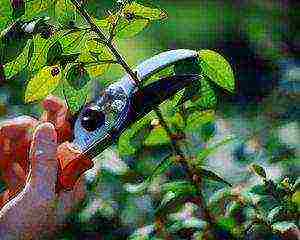 As a rule, plant pruning is planned in the fall. A similar decision is correct due to the fact that in this case it is possible to avoid lacrimation of the vine, and as a result, the death of the shoots.
As a rule, plant pruning is planned in the fall. A similar decision is correct due to the fact that in this case it is possible to avoid lacrimation of the vine, and as a result, the death of the shoots.
Pruning in the spring is possible only when there is an urgent need for it. And it's best to do this. before the start of the juice movement... Usually this operation is planned for the end of February or the beginning of March.
There are several purposes for which actinidia is pruned in the spring:
- liana formation;
- removal of defective shoots, for example, with signs of disease;
- thinning thickened areas.
It is necessary to remove shoots 2 cm above the bud, using only clean and sharp instrument... The cut should be smooth without any defects such as burrs, splits and bends.
When forming a plant, you can take a two-armed grape pattern as a basis. Then, for at least 10 years, it will bring a high yield, without the need for re-pruning for a long time.
If the plant is fan-shaped, then it will have to be done every 3-4 years update the bush... In this case, the first pruning is carried out in the second year of the plant's life.
How to propagate actinidia
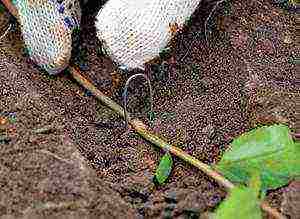 There are several ways to propagate actinidia: cuttings, layering and seeds. The latter method is used the least frequently. This is due to the fact that in half of the cases, male plants grow from germinated seeds.
There are several ways to propagate actinidia: cuttings, layering and seeds. The latter method is used the least frequently. This is due to the fact that in half of the cases, male plants grow from germinated seeds.
Moreover, it is impossible to predict in advance what actinidia will be. Only specimens aged 5–7 years enter the fruiting phase. Therefore, if you do not know if the plant is male, then you can find yourself in a rather unpleasant situation.
Reproduction by layering... In order to avoid possible difficulties during reproduction, it is recommended to use layering. The first step is to select a healthy, well-developed vine, which needs to be dug in in May or early June.
In the fall, it turns into a fairly high-quality seedling with a powerful root system. but experts recommend leave them until early spring, so that at this time you can prune the vine without causing serious injury to the plant.
Propagation by cuttings and advice from experienced gardeners
 For propagation of actinidia by cuttings, it is recommended to choose green branches. They have a fairly high survival rate of 90%. The situation is much worse with lignified cuttings, which take root in no more than 60% of cases.
For propagation of actinidia by cuttings, it is recommended to choose green branches. They have a fairly high survival rate of 90%. The situation is much worse with lignified cuttings, which take root in no more than 60% of cases.
The cuttings selected for planting should have a length of no more than 15 cm.They are harvested at the end of June, after which they are planted in a specially prepared area: the place should be in the shade and constantly moisturized.
Before planting, which is carried out to a depth of 50 cm, the pit must be filled with a mixture based on sand and peat, taken in a 2: 1 ratio. Usually, the complete formation of the root system takes no more than a month. As a result, the first young branches can be obtained in the fall.
For ordinary gardeners, the actinidia plant seems to be little known, although in reality this is not entirely true. There is a variety that almost every one of us has heard about. It is about kiwi, which is a fruiting variety of actinidia.
Naturally, it can only be grown in subtropical conditions. However, for the climate of our country, there are corresponding varieties of actinidia, which thrive even in such harsh regions as the Moscow region and Siberia.
Correct selection of varieties and adherence to agricultural technology growing actinidia allows you to count on the fact that with appropriate care, actinidia will not only become a bright decoration of the summer cottage, but will also be able to please the gardener with delicious fruits.
Rate the article:
(0 votes, average: 0 out of 5)
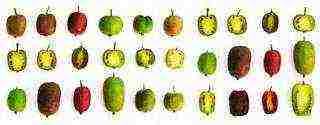 There is probably no greater joy for a gardener than growing some new plant. One of such welcome guests in the garden plots of Russia is the berry culture - actinidia. If someone else does not know what this is about, then just remember kiwi. Kiwi is one of the southern species of actinidia.
There is probably no greater joy for a gardener than growing some new plant. One of such welcome guests in the garden plots of Russia is the berry culture - actinidia. If someone else does not know what this is about, then just remember kiwi. Kiwi is one of the southern species of actinidia. 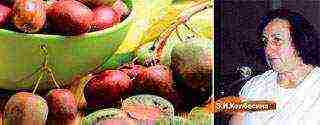 E.I. Kolbasina began to actively study actinidia on about. Sakhalin since 1953, and already 30 years later, in the 1980s, successfully introduced it into culture in the Moscow region. It is thanks to her active and many years of work that domestic gardeners received 27 new varieties, which successfully passed the test and were entered into the State Register of the Russian Federation, as plants adapted for growing in our country. What else can you say about the novelties of the domestic selection of actinidia? Each variety has passed the test of time, as many plants from 5 species (and this is more than 200 varieties) have been studied and grown for 30 years in the Moscow region. And, as practice shows, all these varieties of domestic breeding feel great in open fields with a northern slope (moreover: without supports, without irrigation, without fertilization, without weeding). As practice has shown, if in unfavorable breeding conditions they survive and give a good harvest, then, subject to agricultural technology, the harvest, the quality of the fruits and the appearance of the plants exceed all expectations.
E.I. Kolbasina began to actively study actinidia on about. Sakhalin since 1953, and already 30 years later, in the 1980s, successfully introduced it into culture in the Moscow region. It is thanks to her active and many years of work that domestic gardeners received 27 new varieties, which successfully passed the test and were entered into the State Register of the Russian Federation, as plants adapted for growing in our country. What else can you say about the novelties of the domestic selection of actinidia? Each variety has passed the test of time, as many plants from 5 species (and this is more than 200 varieties) have been studied and grown for 30 years in the Moscow region. And, as practice shows, all these varieties of domestic breeding feel great in open fields with a northern slope (moreover: without supports, without irrigation, without fertilization, without weeding). As practice has shown, if in unfavorable breeding conditions they survive and give a good harvest, then, subject to agricultural technology, the harvest, the quality of the fruits and the appearance of the plants exceed all expectations.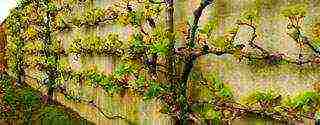 Speaking about the origin of actinidia, it is important to note that in nature, in the wild, they are found in the Far East. Although earlier their range spread over most of Russia, glaciations have narrowed their habitat to the Far Eastern taiga. And the fact that actinidia survived in those difficult conditions suggests that it is a hardy plant. And even now the Far East does not please the vine with good weather - cold winters and cool summers. Therefore, planting this berry culture today in the middle lane, we simply return it to its native habitats and most often transfer it even to better conditions than in our modern homeland.
Speaking about the origin of actinidia, it is important to note that in nature, in the wild, they are found in the Far East. Although earlier their range spread over most of Russia, glaciations have narrowed their habitat to the Far Eastern taiga. And the fact that actinidia survived in those difficult conditions suggests that it is a hardy plant. And even now the Far East does not please the vine with good weather - cold winters and cool summers. Therefore, planting this berry culture today in the middle lane, we simply return it to its native habitats and most often transfer it even to better conditions than in our modern homeland. 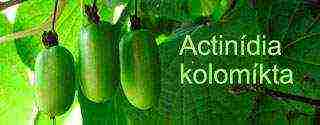
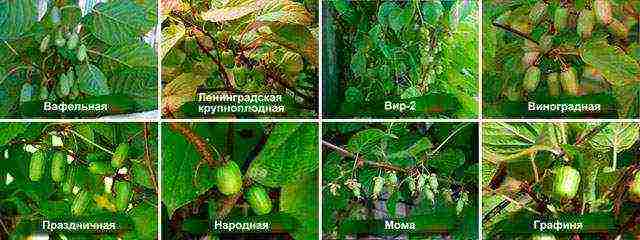
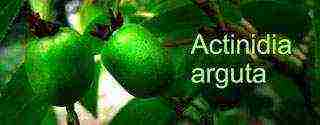 Actinidia of this species can grow up to seven meters. They are considered one of the most vigorous, durable and powerful plants in the Actinidiaceae family from the Far East. Loves the sun. The plant, including the novelties of actinidia breeding, cannot boast of the same decorative leaves as a. kolomikta. But this species has another advantage - larger fruits, their almost complete non-shedding, more abundant harvest and often maximum sugar content. Also, new varieties of actinidia arguta have different aromas: melon, banana, grape and many others. Differs in less early maturity than kolomikta and polygamy: two-year-olds give the first harvest 2-3 years after planting in the spring. More durable: lives up to 100 years.
Actinidia of this species can grow up to seven meters. They are considered one of the most vigorous, durable and powerful plants in the Actinidiaceae family from the Far East. Loves the sun. The plant, including the novelties of actinidia breeding, cannot boast of the same decorative leaves as a. kolomikta. But this species has another advantage - larger fruits, their almost complete non-shedding, more abundant harvest and often maximum sugar content. Also, new varieties of actinidia arguta have different aromas: melon, banana, grape and many others. Differs in less early maturity than kolomikta and polygamy: two-year-olds give the first harvest 2-3 years after planting in the spring. More durable: lives up to 100 years. 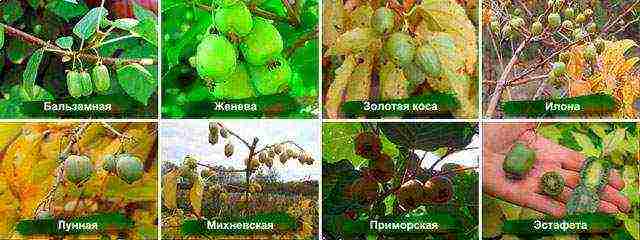
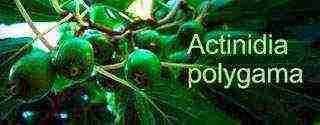 Perhaps one of the features of this plant is that ripe berries have a beautiful orange color. In addition to this advantage, new varieties of actinidia are rich in biologically active substances - carotenoids (competes with sea buckthorn and carrots). At the same time, organic acids are found in small quantities in berries, which makes this species especially interesting for those who need dietary food. It is impossible not to mention the unusual and wonderful taste of actinidia polygamum - the taste reminds a little of sweet peppers and figs! Tasty and unusual.
Perhaps one of the features of this plant is that ripe berries have a beautiful orange color. In addition to this advantage, new varieties of actinidia are rich in biologically active substances - carotenoids (competes with sea buckthorn and carrots). At the same time, organic acids are found in small quantities in berries, which makes this species especially interesting for those who need dietary food. It is impossible not to mention the unusual and wonderful taste of actinidia polygamum - the taste reminds a little of sweet peppers and figs! Tasty and unusual.  High palatability and fig-like taste are provided by the excellent sugar content in modern varieties - 12% or more. Slightly unripe fruits have a strong - burning taste - be careful! When fully ripe and softened, the pungency disappears. There are varieties in which fruits, when ripe, taste like hot pepper - they make excellent sauces, adjika, etc. - like from hot pepper. It is worth noting that not only the fruits of the plant have nutritional value. Young shoots with leaves are very often added to spring salads (you can also use it with soy sauce, it tastes like watercress). This species has very fragrant flowers and smells of jasmine. Interestingly, actinidia polygamy is appreciated not only by gardeners, but also by our smaller brothers - cats. They love to gnaw on these plants more than other types of actinidia, so it is worth initially thinking about how to protect them from these pests.
High palatability and fig-like taste are provided by the excellent sugar content in modern varieties - 12% or more. Slightly unripe fruits have a strong - burning taste - be careful! When fully ripe and softened, the pungency disappears. There are varieties in which fruits, when ripe, taste like hot pepper - they make excellent sauces, adjika, etc. - like from hot pepper. It is worth noting that not only the fruits of the plant have nutritional value. Young shoots with leaves are very often added to spring salads (you can also use it with soy sauce, it tastes like watercress). This species has very fragrant flowers and smells of jasmine. Interestingly, actinidia polygamy is appreciated not only by gardeners, but also by our smaller brothers - cats. They love to gnaw on these plants more than other types of actinidia, so it is worth initially thinking about how to protect them from these pests. 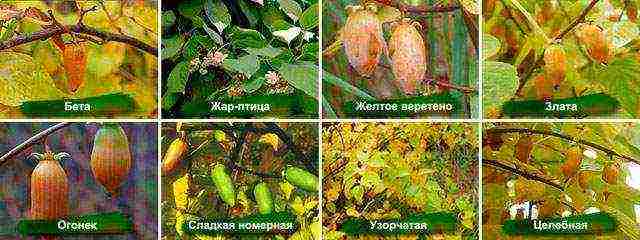
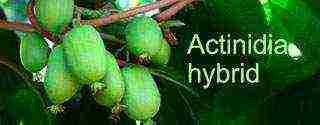 As for this new subspecies, it appeared thanks to the breeder I. M. Shaitan from Kiev. The scientist with his group crossed a. argument and a. purple. The goal of this hybridization is a new and improved species. As a result, new varieties of actinidia should have received high winter hardiness and large-fruited from a. argument, and from a. purple - aroma, taste and bouquet type of flowering and fruiting. Here it is worth mentioning such varieties as Kiev hybrid, Figurnaya, September. The new varieties had the intended qualities, but were not hardy enough for the Moscow region. Then the work on hybrid actinidia was continued by E.M. Sausage. By the method of selection of the Sents, frost-resistant "kids" were obtained from the Kiev varieties. As a result of the work of this outstanding breeder, varieties appeared that had not only high indicators of large-fruited, taste and bouquet (bouquet - multiplicity, when not 1-3 fruits, but a whole bunch develops from one flower bud), but were well suited for central Russia ... One of the new varieties of actinidia was even given the name a. hybrid sausage (in honor of the breeder). Hybrid varieties versus a. argut, had an interesting color of both the skin and the pulp: the skin turned out to be pinkish or purple, and the pulp has a red color around the core (sometimes the core itself is colored this way). It is these new varieties of actinidia, "kids" and seedlings that have shown high winter hardiness that the Zilli-on online store is actively introducing into the market of the middle zone of the Russian Federation.
As for this new subspecies, it appeared thanks to the breeder I. M. Shaitan from Kiev. The scientist with his group crossed a. argument and a. purple. The goal of this hybridization is a new and improved species. As a result, new varieties of actinidia should have received high winter hardiness and large-fruited from a. argument, and from a. purple - aroma, taste and bouquet type of flowering and fruiting. Here it is worth mentioning such varieties as Kiev hybrid, Figurnaya, September. The new varieties had the intended qualities, but were not hardy enough for the Moscow region. Then the work on hybrid actinidia was continued by E.M. Sausage. By the method of selection of the Sents, frost-resistant "kids" were obtained from the Kiev varieties. As a result of the work of this outstanding breeder, varieties appeared that had not only high indicators of large-fruited, taste and bouquet (bouquet - multiplicity, when not 1-3 fruits, but a whole bunch develops from one flower bud), but were well suited for central Russia ... One of the new varieties of actinidia was even given the name a. hybrid sausage (in honor of the breeder). Hybrid varieties versus a. argut, had an interesting color of both the skin and the pulp: the skin turned out to be pinkish or purple, and the pulp has a red color around the core (sometimes the core itself is colored this way). It is these new varieties of actinidia, "kids" and seedlings that have shown high winter hardiness that the Zilli-on online store is actively introducing into the market of the middle zone of the Russian Federation.
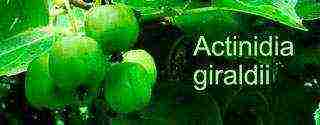 Agronomists and breeders refer to this type of actinidia as a species. argument, or at least consider them to be close relatives. But still, new varieties of actinidia giraldi differ from their "friend" in larger and sweeter fruits. Wild actinidia giraldi is a very rare plant and is listed in the Red Book. Therefore, by planting this species on his site, the gardener, sometimes without realizing it himself, contributes to the preservation of this valuable plant.The fruits of this species can vary in shape and size, as in all actinidia, the size of the fruit can greatly increase after proper formation and rationing of the crop. For example, the Tuzemka variety, after pruning, bore fruit with 26-gram berries. Her fruits are round, like apples of paradise, surprisingly harmonious and tasty, you want to eat them more and more ...
Agronomists and breeders refer to this type of actinidia as a species. argument, or at least consider them to be close relatives. But still, new varieties of actinidia giraldi differ from their "friend" in larger and sweeter fruits. Wild actinidia giraldi is a very rare plant and is listed in the Red Book. Therefore, by planting this species on his site, the gardener, sometimes without realizing it himself, contributes to the preservation of this valuable plant.The fruits of this species can vary in shape and size, as in all actinidia, the size of the fruit can greatly increase after proper formation and rationing of the crop. For example, the Tuzemka variety, after pruning, bore fruit with 26-gram berries. Her fruits are round, like apples of paradise, surprisingly harmonious and tasty, you want to eat them more and more ...